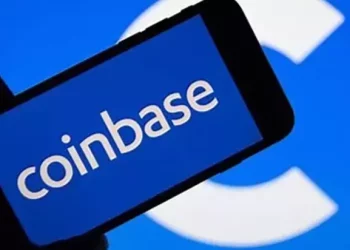Security Features:
MetaMask
Private Key Management: MetaMask gives users full control over their private keys. It stores the private keys locally on the device (browser extension for desktops or mobile app) where it is installed. This means that the user is solely responsible for safeguarding their keys, which offers a high level of privacy as no third party has access to them by default. However, this also implies that if the user loses access to their device or forgets their password, recovering the wallet can be extremely challenging without proper backup measures in place, such as a recovery phrase.
Encryption: It employs strong encryption algorithms to protect the data stored within the wallet. The wallet’s communication with blockchain networks is also encrypted to prevent unauthorized access or interception of transaction details. Additionally, MetaMask prompts users to set up a password, and it’s advisable to use a complex one, further adding a layer of security to the wallet.
Multi-signature Support: MetaMask supports multi-signature transactions in certain scenarios. This feature allows multiple parties to have a say in authorizing a transaction, which can be useful for shared wallets or in business settings where multiple stakeholders need to approve a crypto transfer. It adds an extra level of security and accountability in financial operations within the blockchain ecosystem.
Coinbase Wallet
Institutional-Grade Security: Coinbase Wallet benefits from the security infrastructure of Coinbase, which is a well-known and regulated cryptocurrency exchange. It has built-in safeguards against common security threats like phishing attacks, malware, and unauthorized access. The wallet’s servers are secured with industry-standard encryption, and Coinbase has a team of security experts constantly monitoring and updating the security protocols.
Recovery Options: Coinbase Wallet offers relatively straightforward recovery options. Users can link their wallet to their Coinbase account (if they have one), which can simplify the process of regaining access in case of lost passwords or device issues. It also provides backup options through a recovery phrase, similar to MetaMask, but the integration with the larger Coinbase ecosystem gives an added sense of security and convenience for users who are already familiar with the Coinbase platform.
Insurance Coverage: One significant advantage of Coinbase Wallet is that it is part of Coinbase’s services, which offers insurance coverage for digital assets stored in its custody. While this doesn’t cover all possible scenarios and has its own terms and conditions, it provides users with some level of reassurance that their funds are protected in case of a security breach on Coinbase’s end.
User Interface and Ease of Use:
MetaMask
Simplified Dashboard: MetaMask has a clean and straightforward dashboard that displays the user’s wallet balance, recent transactions, and connected blockchain networks. The interface is designed to be intuitive, making it easy for even beginners to quickly understand the basic functions like sending and receiving cryptocurrencies. The wallet’s settings are also easily accessible, allowing users to manage their network connections, privacy settings, and more with just a few clicks.
Browser Integration: As a browser extension primarily (with a mobile app as well), MetaMask’s integration with popular browsers like Chrome, Firefox, etc., is seamless. This enables users to interact with decentralized applications (dApps) directly from their browsers. For example, when visiting a blockchain-based game or a decentralized finance (DeFi) platform, MetaMask can automatically detect and allow the user to connect and perform actions within that dApp without having to switch between multiple applications.
Initial Setup Process: The initial setup of MetaMask is relatively simple. Users are guided through the process of creating a new wallet, setting a password, and securely storing their recovery phrase. However, for those completely new to the crypto world, understanding the significance of the recovery phrase and how to properly safeguard it might require some additional learning.
Coinbase Wallet
User-Friendly Design: Coinbase Wallet has a very user-friendly design that is similar to the Coinbase exchange interface in some aspects, which can be comforting for users who are already accustomed to the Coinbase platform. It presents the wallet’s features and functions in an easy-to-understand manner, with clear options for sending, receiving, and managing different cryptocurrencies. The wallet also provides helpful tooltips and explanations for various actions, making it accessible to beginners.
Mobile App Experience: The Coinbase Wallet mobile app is particularly well-designed, with a smooth and intuitive user experience. It has features like biometric authentication (fingerprint or face ID on compatible devices), which adds convenience and an extra layer of security for accessing the wallet on mobile. The app also allows for easy scanning of QR codes for quick transactions, which is a handy feature for in-person crypto exchanges.
Guided Onboarding: Coinbase Wallet offers a guided onboarding process that walks users through every step of setting up their wallet, from creating an account to understanding how to manage their digital assets. It also provides educational resources within the app to help users learn about cryptocurrencies and the wallet’s functionality, which can be valuable for those who are new to the space.
Supported Cryptocurrencies:
MetaMask
Wide Range of ERC-20 Tokens: MetaMask is highly compatible with Ethereum-based tokens. Given that Ethereum has a vast ecosystem of decentralized applications and tokens built on its blockchain, MetaMask can support a large number of ERC-20 tokens out of the box. Users can easily add custom tokens by entering their contract addresses, which makes it very versatile for interacting with various projects in the DeFi, NFT, and other Ethereum-driven sectors.
Interoperability with Other Blockchains: In addition to Ethereum, MetaMask has been expanding its support for other blockchains through integrations and plugins. For example, it now has support for Binance Smart Chain, Polygon, and others, allowing users to manage multiple types of cryptocurrencies across different blockchain networks from a single wallet interface. This interoperability is a significant advantage for users who want to diversify their crypto holdings and engage with different blockchain ecosystems.
Coinbase Wallet
Major Cryptocurrencies: Coinbase Wallet supports a wide range of major cryptocurrencies like Bitcoin, Ethereum, Litecoin, and many others. It has a curated list of coins that are popular and widely traded, which makes it convenient for users who want to hold and transact in these mainstream digital assets. The wallet’s support for different cryptocurrencies is regularly updated to include new and emerging coins that meet Coinbase’s criteria for listing.
Coinbase Exchange Integration: Since Coinbase Wallet is closely linked to the Coinbase exchange, it allows for seamless transfer of cryptocurrencies between the wallet and the exchange. This integration simplifies the process of buying and selling cryptocurrencies, as users can easily move their assets from the wallet to the exchange when they want to trade and back to the wallet for storage or other transactions.
Fees and Transaction Costs:
MetaMask
Network Fees: MetaMask itself doesn’t charge users any additional fees for using the wallet. However, when users conduct transactions on blockchain networks (such as Ethereum), they need to pay network fees, also known as gas fees. These fees can vary significantly depending on the network congestion and the complexity of the transaction. During periods of high network activity, gas fees can become quite expensive, which is an important consideration for users planning to make frequent transactions.
No Hidden Costs: MetaMask is transparent about the fees involved, as it simply passes on the network fees required by the underlying blockchain. There are no hidden charges or service fees imposed by the wallet itself, which allows users to have a clear understanding of the costs associated with their transactions.
Coinbase Wallet
Transaction Fees: Coinbase Wallet may have its own fee structure depending on the type of transaction and the cryptocurrency being used. In addition to any network fees (like those on the blockchain), Coinbase may charge a small fee for facilitating certain transactions, especially when using its additional services such as instant transfers or converting between different cryptocurrencies. These fees are usually clearly disclosed to users, but they can add up over time and impact the overall cost-effectiveness of using the wallet for frequent transactions.
Coinbase Exchange Influence: Since Coinbase Wallet is integrated with the Coinbase exchange, users may also be subject to the exchange’s fee policies when moving funds between the wallet and the exchange. For example, there might be fees for depositing or withdrawing cryptocurrencies from the exchange to the wallet, which is something users need to take into account when considering the overall cost of using the wallet.
Decentralization and Control:
MetaMask
True Decentralization: MetaMask is a decentralized wallet, which means that users have complete control over their funds and transactions without relying on a central authority. It connects directly to blockchain networks, allowing users to interact with dApps and execute transactions in a peer-to-peer manner. This level of decentralization aligns with the core principles of blockchain technology and gives users the freedom to manage their crypto assets independently.
Community and Open Source: MetaMask is an open-source project, which means that its codebase is publicly available for inspection and contribution by developers around the world. The community around MetaMask is quite active, constantly working on improving the wallet, adding new features, and enhancing security. This collaborative nature of the project can lead to faster innovation and better adaptation to the changing needs of the blockchain ecosystem.
Coinbase Wallet
Semi-Decentralized Model: Coinbase Wallet, while providing users with access to their private keys and a certain level of control over their assets, still has some ties to the Coinbase centralized platform. For example, the option to link with the Coinbase account and the integration with the exchange’s services mean that there is a degree of centralization involved. However, it still allows users to manage their digital assets in a more decentralized way compared to traditional custodial wallets offered by some exchanges.
Regulatory Compliance: Due to its association with Coinbase, which is a regulated entity in the cryptocurrency space, Coinbase Wallet has to adhere to various regulatory requirements. While this can ensure a certain level of security and legitimacy, it also means that there may be some limitations on certain features or transactions compared to fully decentralized wallets like MetaMask.
















